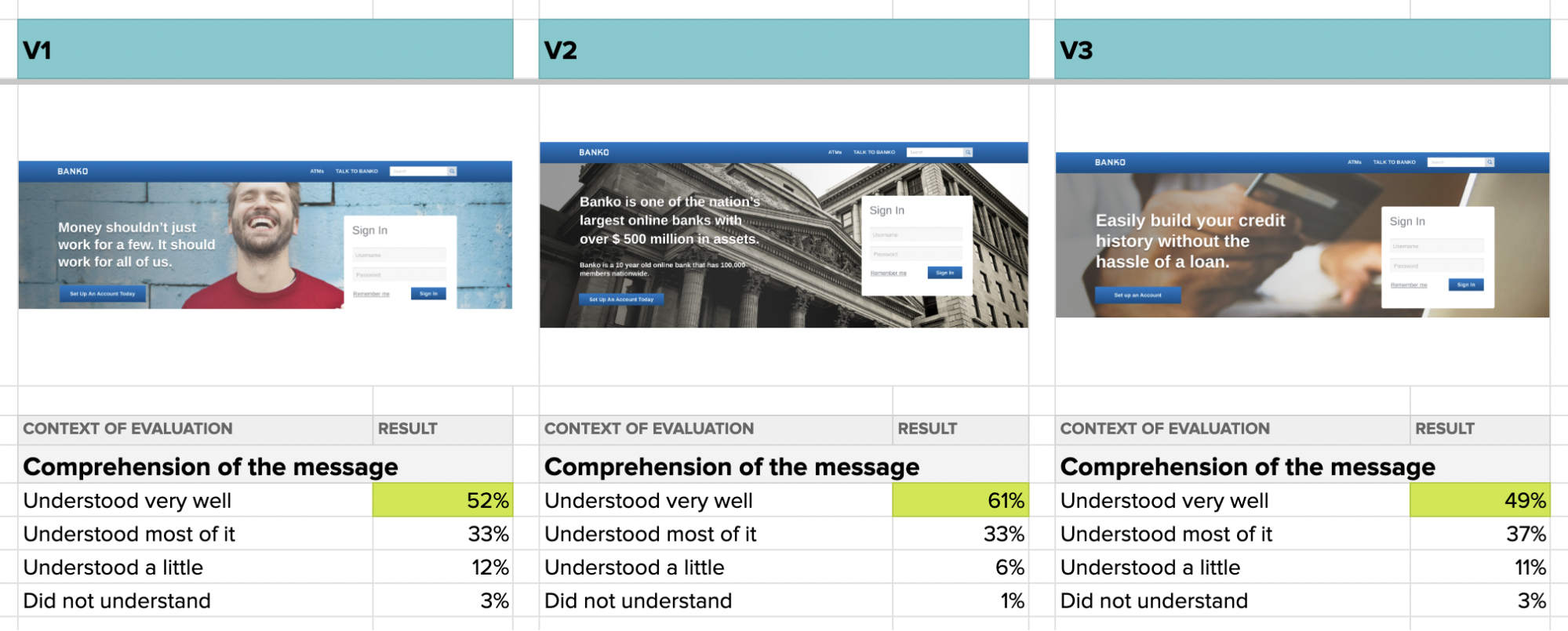Understanding the Lean Startup Methodology
In today’s fast-paced business world, one methodology that has gained significant attention and popularity is the Lean Startup Methodology. Entrepreneurs and startups face ever-increasing pressure to innovate and deliver results. In this article, we will explore the origins, core principles, implementation steps, and impact of Lean Startup, as well as its criticisms and limitations. Let’s dive in!
🔩 The Nuts and Bolts:
- The Lean Startup Methodology, created in the early 2000s by Eric Ries, is a systematic and iterative approach to launching successful startups.
- It draws inspiration from lean manufacturing principles and agile development practices with the aim of finding an efficient way to build startups.
- Central to the Methodology are three core principles: Build-Measure-Learn feedback loop, Minimum Viable Product (MVP), and continuous innovation.
- Several influential figures contributed to its development, including Steve Blank’s customer development concept and Ash Maurya’s Lean Canvas visual tool.
- By embracing Lean Startup methodology, businesses can experience increased efficiency through validated learning and meaningful metrics, as well as a shift in organizational culture towards experimentation, collaboration, and continuous improvement.
- While it has received widespread acclaim, there are critiques of feature-focused products lacking a clear vision, and certain situations where it may not be suitable.
The Origins of the Lean Startup Methodology
The Lean Startup Methodology can be traced back to the early 2000s when entrepreneur Eric Ries began experimenting with a new approach to building and launching startups. Drawing inspiration from lean manufacturing principles and agile development practices, Ries sought to create a systematic and iterative method for turning ideas into successful businesses.
Ries was driven by a desire to find a more efficient and effective way to build startups. He recognized that traditional methods of business planning and execution often led to wasted time, resources, and, ultimately, failure. With this in mind, he set out to develop a methodology that would enable entrepreneurs to navigate the uncertain and unpredictable nature of the startup world.
Through his own experiences as an entrepreneur and his observations of other startups, Ries began to identify common patterns and challenges. He realized that many startups were spending too much time and money building products or services that ultimately didn’t meet the needs of their target customers. This led him to question the traditional approach of extensive planning and prediction.
The Philosophy Behind Lean Startup Methodology
At its core, the Lean Startup Methodology is grounded in learning through experimentation. Rather than relying on extensive planning and prediction, it encourages entrepreneurs to embrace uncertainty and take small, incremental steps to validate their ideas.
This philosophy is rooted in the belief that startups are inherently risky ventures and that entrepreneurs must be willing to adapt and pivot based on real-world feedback. By taking a scientific approach to entrepreneurship, Ries argues that startups can reduce the risk of failure and increase their chances of success.
Central to the Lean Startup Methodology is the Minimum Viable Product (MVP) concept. An MVP is a version of a product or service that has just enough features to satisfy early customers and gather feedback. By releasing an MVP early on, entrepreneurs can quickly learn what works and what doesn’t and make informed decisions about the future direction of their startup.
Key Figures in the Development of Lean Startup Methodology
Although Eric Ries is often credited as the pioneer of Lean Startup, several other influential figures contributed to its development. Notable names include Steve Blank. He introduced the concept of customer development, and Ash Maurya popularized running experiments using a Kanban-based approach.
Steve Blank’s work on customer development emphasized the importance of understanding customers’ needs and pain points before building a product. He advocated for entrepreneurs to continuously dialogue with potential customers, gathering feedback and iterating on their ideas based on real-world insights.
Ash Maurya’s contribution to Lean Startup lies in his development of the Lean Canvas. This visual tool helps entrepreneurs map out their business models and identify key assumptions to test. This approach aligns with the Lean Startup philosophy of running small experiments to validate or invalidate assumptions and adjusting the business model accordingly.
These key figures and their contributions have shaped the Lean Startup Methodology into today’s widely recognized and adopted approach. By combining principles from lean manufacturing, agile development, and customer-centric practices, Lean Startup offers entrepreneurs a framework for building successful startups in an uncertain and rapidly changing world.
Core Principles of the Lean Startup Methodology
Central to the Lean Startup Methodology are three core principles: the Build-Measure-Learn feedback loop, the Minimum Viable Product (MVP) concept, and the emphasis on continuous innovation.
When building a successful startup, having a solid foundation is crucial. The Lean Startup Methodology provides entrepreneurs a framework for efficiency, learning, and adaptability. By following these core principles, startups can increase their chances of success in a highly competitive market.
Make your design decisions count.
Subscribe to Design Under Pressure. Get insights, UX metrics, and tools for bold, informed design.
We respect your inbox. Just insights. No fluff. Privacy Policy.
The Build-Measure-Learn Feedback Loop
The Build-Measure-Learn feedback loop is the heart of Lean Startup. It involves quickly building a prototype or version of the product, measuring its performance and user feedback, and learning from these insights to make informed adjustments and improvements.
Imagine you have an innovative idea for a new mobile app. The first step in the Build-Measure-Learn feedback loop would be to transform your idea into a tangible prototype. This prototype allows you to test your assumptions and gather valuable feedback from potential users.
Once you have a working prototype, it’s time to measure its performance. This involves collecting data on user interactions, engagement, and satisfaction. By analyzing this data, you can gain insights into what works well and what needs improvement.
Learning from the data and user feedback, you can make informed adjustments and improvements to your product. This iterative process allows you to continuously enhance your offering, ensuring that it meets the needs and expectations of your target audience.
Minimum Viable Product (MVP)
In Lean Startup, an MVP refers to the simplest version of a product that enables entrepreneurs to test their hypotheses with real customers. Entrepreneurs can gain valuable feedback early without investing excessive time and resources by focusing on the core value proposition and eliminating nonessential features.
Creating an MVP allows you to validate your assumptions and test the market demand for your product. It’s important to remember that an MVP is not a scaled-down version of your final product but rather a strategic approach to gathering feedback and learning from real users.
For example, if you’re developing a new e-commerce platform, your MVP could be a basic website with limited functionality. This allows you to test the user experience, gather feedback on the purchasing process, and identify any pain points that need to be addressed.
Launching an MVP can minimize the risk of building a product that doesn’t resonate with your target audience. It also enables you to iterate and improve based on real-world feedback, increasing the chances of creating a successful and scalable product.
Continuous Innovation
Lean Startup advocates for a culture of continuous innovation, where entrepreneurs regularly experiment, learn, and iterate. This approach helps businesses stay agile and adapt to changing customer needs and market conditions.
In today’s fast-paced business landscape, embracing a mindset of continuous innovation is essential. By constantly seeking new opportunities, experimenting with different strategies, and learning from successes and failures, startups can stay ahead of the curve and remain competitive.
Continuous innovation also involves fostering a culture of learning within the organization. Encouraging employees to share ideas, experiment with new approaches, and embrace a growth mindset can fuel creativity and drive innovation.
Furthermore, staying connected with customers and actively seeking their feedback is crucial for continuous innovation. By understanding their evolving needs and preferences, startups can adapt their products and services to deliver maximum value.
In conclusion, the Lean Startup Methodology provides entrepreneurs with a systematic approach to building successful startups. By following the core principles of the Build-Measure-Learn feedback loop, creating a Minimum Viable Product, and embracing continuous innovation, startups can increase their chances of achieving long-term success in a rapidly changing business landscape.
Product Management Technique
Implementing the Lean Startup Methodology
While embracing the Lean Startup Methodology can be challenging, especially for traditional organizations, following a systematic approach can enhance the chances of success.
The Lean Startup Methodology, popularized by Eric Ries, is a framework that helps entrepreneurs and organizations build and launch products or services more efficiently and cost-effectively. It emphasizes the importance of experimentation, iterative development, and customer feedback.
By adopting the Lean Startup approach, businesses can reduce the risks associated with traditional product development methods, such as spending significant time and resources on building a product that may not meet market needs.
Steps to Adopting the Lean Startup Methodology Approach
A successful adoption of Lean Startup involves several key steps:
- Creating a culture of experimentation fosters an environment where experimentation and learning from failure are encouraged. It requires a shift in mindset, where failure is seen as a valuable learning opportunity rather than a setback.
- Defining clear goals and metrics: Setting clear goals and metrics is crucial for measuring progress and determining whether a product or service meets customer needs. These goals and metrics should be aligned with the overall business objectives.
- Identifying and testing critical assumptions: Every business idea is built on assumptions. The Lean Startup approach emphasizes identifying and testing the most critical assumptions through small-scale experiments or prototypes. This helps validate or invalidate assumptions early on, reducing the risk of building a product nobody wants.
- Analyzing data and customer feedback: Data and customer feedback play a vital role in the Lean Startup methodology. Businesses can gain valuable insights into customer preferences, behavior, and needs by collecting and analyzing data from experiments and customer interactions. This data-driven approach enables informed decision-making and helps prioritize future iterations.
- Iterating based on the insights gained: The Lean Startup approach is all about continuous improvement. Businesses should iterate and refine their products or services based on the insights gained from experimentation and customer feedback. This iterative process allows for faster learning, adaptation, and creating products that better meet customer needs.
Challenges in Lean Startup Methodology Implementation
Implementing Lean Startup has its challenges. Entrepreneurs and organizations may encounter various obstacles along the way. Some common challenges include:
- Resistance to change: Traditional organizations may resist change and need help adopting a new methodology like Lean Startup. Overcoming this resistance requires effective communication, education, and demonstrating the approach’s benefits.
- Lack of support from stakeholders: With the support and buy-in from key stakeholders, implementing Lean Startup can be smooth. It is crucial to involve and engage stakeholders early on, ensuring their understanding and support for the methodology.
- Difficulties in prioritizing and managing experiments: With limited resources, prioritizing and managing experiments effectively can be challenging. Businesses must carefully select and prioritize experiments based on their potential impact and feasibility.
However, with perseverance and continuous learning, these challenges can be overcome. The Lean Startup methodology provides a structured framework that helps businesses navigate these obstacles and increase their chances of success.
🚀 If you’re using Helio
Prioritize properly with concise qualitative and quantitative feedback.

Enhance efficiency, foster innovation, and stay ahead in today’s ever-evolving market.
The Impact of the Lean Startup Methodology
By adopting the Lean Startup Methodology, businesses can experience a range of positive impacts that drive efficiency and foster innovation.
Effect on Business Efficiency
Lean Startup promotes a more efficient use of resources by focusing on validated learning and meaningful metrics. This leads to reduced waste, improved decision-making, and faster delivery of products or services to market.
Influence on Corporate Culture
Embracing Lean Startup principles can transform the organizational culture, fostering a mindset of experimentation, collaboration, and continuous improvement. It encourages teams to think creatively and take calculated risks, ultimately driving innovation and motivating employees.
Criticisms and Limitations of the Lean Startup Methodology
While the Lean Startup Methodology has gained widespread acclaim, it is not without its critics. Let’s explore some potential drawbacks entrepreneurs and businesses should be aware of.
Potential Drawbacks of the Lean Approach
One critique of Lean Startup is its potential for creating feature-focused products that need a clearer overall vision. Entrepreneurs risk building disjointed products without a coherent strategy that fail to capture the market’s attention.
Situations Where Lean Startup May Not Be Suitable
Despite its effectiveness in many cases, there may be better approaches than Lean Startup in certain situations, such as highly regulated industries or when dealing with disruptive technologies that require considerable upfront investment. In such instances, a more traditional approach may be more appropriate.
Understanding the Lean Startup Methodology is crucial for entrepreneurs and startups looking to navigate the complex innovation journey. By embracing the philosophy’s core principles and implementing the method systematically, businesses can enhance efficiency, foster innovation, and stay ahead in today’s ever-evolving market. While there are criticisms and limitations to be mindful of, it is clear that Lean Startup provides a powerful framework for entrepreneurial success in today’s dynamic business landscape.
Lean Startup Methodology FAQs
The Lean Startup Methodology is a framework developed by Eric Ries that helps entrepreneurs and organizations build and launch products or services more efficiently and cost-effectively. It emphasizes the importance of experimentation, iterative development, and customer feedback.
The core principles of the Lean Startup Methodology are the Build-Measure-Learn feedback loop, the concept of Minimum Viable Product (MVP), and the emphasis on continuous innovation.
Key figures in the development of Lean Startup include Eric Ries, Steve Blank, and Ash Maurya.
The Build-Measure-Learn feedback loop is the heart of Lean Startup. It involves quickly building a prototype or version of the product, measuring its performance and user feedback, and learning from these insights to make informed adjustments and improvements.
A Minimum Viable Product (MVP) is a version of a product or service that has just enough features to satisfy early customers and gather feedback. By releasing an MVP early on, entrepreneurs can quickly learn what works and what doesn’t and make informed decisions about the future direction of their startup.
Continuous innovation involves regularly experimenting, learning, and iterating. It helps businesses stay agile and adapt to changing customer needs and market conditions. It also involves fostering a culture of learning within the organization and actively seeking customer feedback to understand evolving needs and preferences.
The steps to adopting the Lean Startup approach include creating a culture of experimentation, defining clear goals and metrics, identifying and testing critical assumptions, analyzing data and customer feedback, and iterating based on the insights gained.



